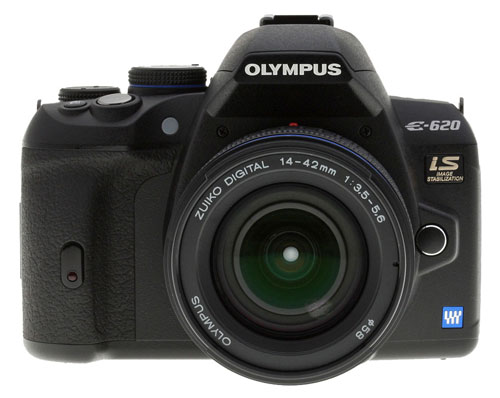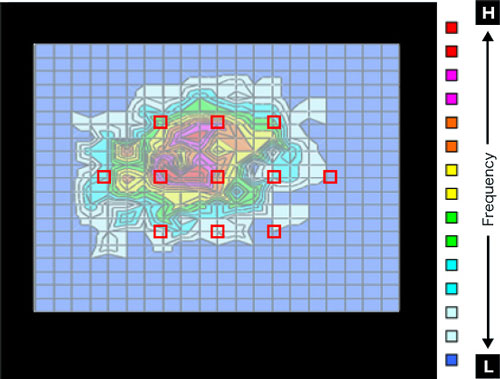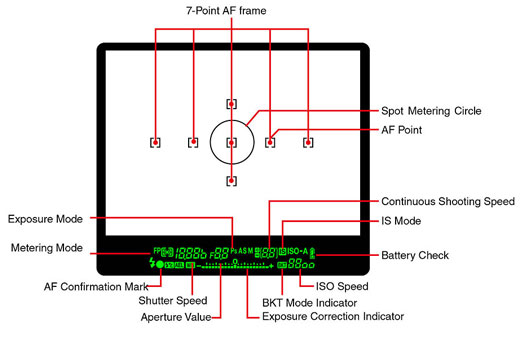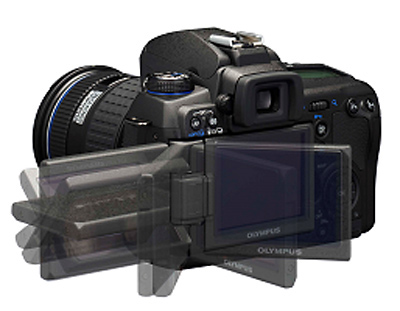PMA 2009: Panasonic GH1 & Olympus E620
by Wesley Fink on March 9, 2009 5:40 PM EST- Posted in
- Digital Camera
Olympus E-620
In our look at the flag-ship Olympus E-3 in late 2007, the AF performance was a dramatic improvement over anything previously from Olympus. The new module featured 11 double cross-point sensors and claimed the fastest AF on the market with the new SSW lenses.
The fast E-3 11-point AF was quite a step-up from the Olympus 3-point AF. As mentioned in that review, it was our opinion Olympus needed to migrate that AF module down to mid and entry models as soon as possible.
The first example of this migration was the 12.3 Megapixel E-30, which is now in the lab at AT for review. The E-30 is all but the same AF as the E-3, but with claimed improvements which make the AF even speedier. That makes the E-30 AF a joy to work with, but it really doesn’t bring the new AF module to a new price point in the Olympus line.
The E-30 is designed for the upper Prosumer or Advanced Amateur market with a MSRP of $1299. It’s actual selling price today still remains around that $1299. The problem is that is almost exactly the same street price as the pro-oriented E-3 is actually selling for today. That means the new Olympus AF module is just as innovative and desirable as before, but it is still selling for a premium in the Olympus DSLR line.

The introduction of the E-620 is exciting because for the first time it moves much of the technology of the Olympus E-3 AF module to an Olympus entry DSLR model. The E-620 module is based on the same research that went into the E-30/E-3 and it is the same basic point pattern.

As you can see in the above diagram from Olympus, the E-30/E-3 AF module places the 11 double cross points where research indicates they are most needed.

In the E-620 viewfinder, you can see the four corner points have been eliminated – reducing AF points from 11 to 7. That is certainly understandable in reducing cost for the move of the AF module to an entry DSLR. However, in a very un-entry move, the 5 center AF points are all double-cross – sensitive to both horizontal and vertical. The entry competition has at best one center cross-point, so the E-620 should be quite the AF competitor in the entry DSLR market.
Those who know Olympus DSLR cameras will also notice Olympus moved the viewfinder info from the right of the VF to below. Olympus also claims the viewfinder is larger and easier to see on the new E-620.

A very pleasant surprise on the E-620 is the swing and tilt 2.7” LCD inherited from the E-30/E-3.Once you have used the articulating LCD for self-portraits, self-timer images, high/low angle shooting, or Live View shooting you will fully appreciate its usefulness. Many will be very happy this feature is now available on an entry E-620 model that combines it with the superb Panasonic 12.3 Megapixel Live MOS sensor and multi-point contrast-detect Live View focusing.
The E-620 is slated to ship in April at a MSRP of $699 for the body alone or $799 for the body with the 14-42mm kit lens. Looking at any entry competitors in today’s market the E-620 stands out as a superb value with useful, unique features. Olympus even introduced an accessory battery grip for the E-620, a first for an Olympus entry DSLR. Those who value small size in cameras, a tilt-and swivel LCD, fast AF, and enhanced creative control should definitely take a look at the new E-620.










12 Comments
View All Comments
Wesley Fink - Tuesday, March 10, 2009 - link
Our understanding is that 1920x1080 video is indeed captured at 24fps 1080p (progressive scan), but then converted in camera to 1080i at 60 fps. Given that, which would you call the capture?djc208 - Monday, March 9, 2009 - link
I had figured I'd go for an HD camcorder vice a DSLR next time I went to buy, but with cameras like the Panasonic that line is getting blurry, and it's hard to decide if I'd rather have a video camera that can take pictures, or a still camera that can take video.